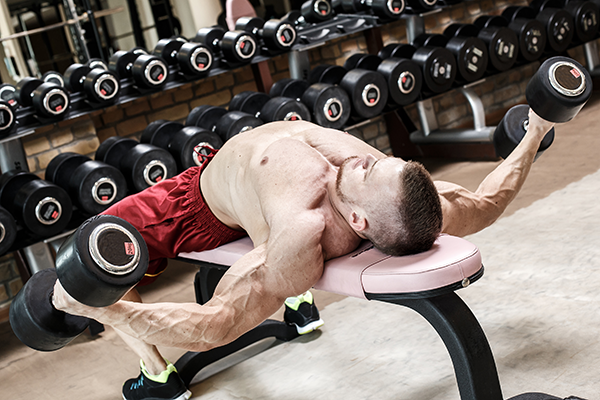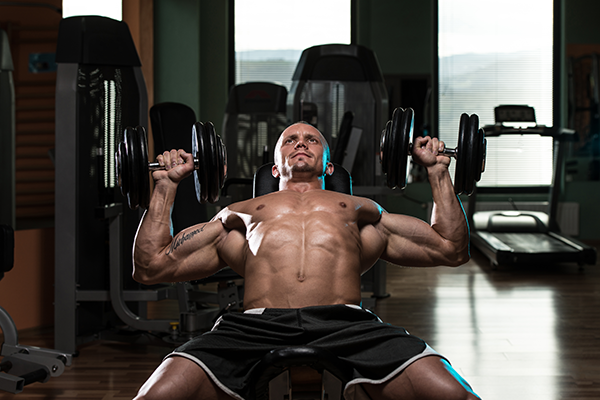
Routine is a wonderful thing. For most of us, each day starts the same way, and ends the same way. It's not a particularly bad thing, per se. Our schedules have evolved into their current means because that is what best helps us to achieve our goals. Routine, over time, allows us to accomplish many things, in a timely and predictable manner. Vacations are nice, but the true successes we see are almost always a result of routine, plain and simple.
For most lifters, there is a weekly routine. We usually train our same muscle groups on the same day each week, in roughly the same order. Maybe it's something we read in a muscle magazine when we were sixteen years old. Maybe it's a result of years of training experience, as we have grown to realize what muscle groups benefit from what day of training, and how to group them so that we see the best possible overall results. Whatever the reason, we have a way of doing things, and it's gotten us to a great spot in our training.
You're not a complacent trainer, and you're always looking for ways to stimulate your training so that you can see better results, even if you've got a good thing going. Continual analysis of the training you are currently using for individual muscle groups can lead you to realize training often needs a little "bump" to get things progressing faster. Chest muscle training is one such area, where adding an exercise here and there can bump up your results. The best training methodology is one you aren't currently using, and adding some new exercises and techniques into the mix can boost your training, whether your results have stalled, or you're just looking to give them a shot in the arm!
Incline Cable Flyes
One exercise that many lifters have never heard about, and is rarely used, it known as the incline cable fly. Place a bench centered in the cable crossover machine area. Bump up the angle to a nice 30 degrees, and place the cable pins at the lowest position, closest to the floor. Pull each repetition slow and in a deliberate manner, keeping focused upon the burn of each individual repetition. Keep your sets in the 8 to 15 rep range. The lack of any sort of resting spot makes this a "continual tension" movement for the entire duration of the movement. This kind of continual pectoral muscle stimulation will burn a lot of muscle fibers, leading to a lot of new growth!

Super Heavy Benching
Very rarely do you ever run into a powerlifter whose chest isn't the thickest thing in the room. Sure, their looser "See-Food" diets often allow powerlifters to eat, well, whatever it is that they see. As a result, their bigger bellies often wear most of the attention they receive. What most people overlook is the fact that often going unnoticed in their baggy shirts and benching shirts is a serious amount of chest muscle. Moving all that weight on the bench press builds up the shoulders, chest, and triceps of powerlifters, often to a point much greater than his bodybuilding peers, whose focus is often upon toning, shaping, and defining. Diet down any powerlifters, and often you see the bodybuilder getting crushed in terms of sheer muscle. Train heavy using sets of 1 to 5 sets, and watch your chest muscle size and strength blow up very quickly!

Dips
Many lifters don't use dips as frequently, or as effectively, as they could be doing. The dips are a unique movement in that they target the pectorals, shoulders, and triceps at an angle completely perpendicular to what is seen with normal pressing of barbells, dumbbells and machines. This recruits a different batch of muscle fibers and really allows the lifters to build new muscle in areas which were, frankly, neglected for years of training. Use 4 sets of 10 to 12 dips with each chest day. Once you can complete 15 reps without stopping, it's time to hang a chain from your weight belt and add some light plates. Gradually add weight to the belt while keeping your form perfect and reps high.

Go High Rep
If you're like most lifters, you have probably found a chest training range that is comfortable for you. If you're benching, with either dumbbells or barbell, you likely stick with the 6 to 10 reps per set range. This provides a safe mix of mass and strength gains, but never really activates the slower-twitch muscle fibers which aren't pulled into the mix until reps 12, 15, 17, and beyond. Under-utilizing these muscle fibers means you're underachieving in terms of overall mass development. If you're serious about giving your training a boost, then it's time to add one high rep set to each of your chest exercises for the next month. Measure the results - they will be noticeable!
Recovery Factors
Often, you aren't making the kinds of gains you would like in terms of chest development not because of anything you're doing wrong in the gym, but because you are overlooking important factors outside of the gym which have a strong influence upon the kinds of results you would normally be seeing from your training. You can train perfectly, but if you leave the gym and eat some Doritos on the way to the club before dancing the night away on a vodka/RedBull fueled celebration, then your chest development results are going to be meager at best. Train hard, drink a shake, and relax. Down some steak and potatoes with your greens, and catch some NetFlix. Let your body recover adequately from tough chest training, and the result will be a boost you never saw coming, in terms of development as well as in preparation for the next day's workout!
The key to boosting your chest training results is two-fold. You have to hit the chest in new and creative ways, both in terms of what exercises you select, as well as the rep ranges you use. Additionally, the means of recovery and rebuilding you give your body will have a profound effect upon the results that you see. Eat right, sleep right, and train in all sorts of new ways. You'll break any plateau. Good luck!


